
2013
2013
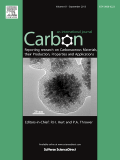
Štengl, V., Bakardjieva S., Bakardjiev M., Štíbr, B., Kormunda M., Carborane Functionalised Graphene Oxide, the Precursor for Formation Conductive Self-Assembled Monolayers, Carbon, 2013, doi:10.1016/j.carbon.2013.10.003
Abstract: A new, advanced graphene oxide based material modified with the extremely stable ocarboranoyl 1,2-C2B10H11 unit was created. The carboranoyl-functionalized graphene oxide was synthesized from Li[1,2-C2B10H11] and COCl-functionalized graphene-oxide, which was prepared by converting the graphene oxide -COOH groups to COCl with SOCl2. The carboranoyl functionalized graphene oxide was characterized using infrared and X-ray photoelectron spectroscopy. The morphology was investigated via transmission, scanning electron, and atomic force microscopies. The electrochemical properties of o-carboranoyl functionalised graphene oxide was studied using cyclic voltammetry, electrochemical impedance spectroscopy and electric force microscopy. This new graphene-based material could in future be used as a precursor for conductive self-assembled monolayers.
 Štengl, V., Bakardjieva, S., Henych, J., Lang, K., Kormunda, M., Blue and green luminescence of reduced graphene oxide quantum dots, Carbon (2013), doi: https://dx.doi.org/10.1016/j.carbon. 2013.07.031
Štengl, V., Bakardjieva, S., Henych, J., Lang, K., Kormunda, M., Blue and green luminescence of reduced graphene oxide quantum dots, Carbon (2013), doi: https://dx.doi.org/10.1016/j.carbon. 2013.07.031
Abstract: We report on a new method for synthesising strongly blue and green photoluminescent graphene quantum dots (GQDs). Graphene was prepared by a new feasible method using an intensive cavitation field in a pressurised ultrasonic batch reactor. The prepared graphene was quantitatively converted to graphene oxide using our modified, safer Hummer’s method. Graphene oxide was characterised by microscopic (AFM and TEM) and spectral (infrared and Raman) methods, and the thermal stability of graphene oxide was determined using thermal analysis (DTA- TG). GQDs were prepared by a one-pot reaction, refluxing graphene oxide in different solvents (ethylene glycol, polyethylene glycol, dimethylformamide, dimethyl sulfoxide and N-methyl-2- pyrrolidone) at atmospheric pressure. The synthesised GQDs were characterised by infrared, UV– Vis absorption and photoluminescence spectroscopy, X-ray photoelectron spectroscopy (XPS) and AFM microscopy.
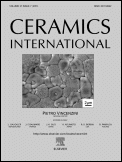 Ctibor, P., Pala, Z., Stengl V., Musalek, R., Photocatalytic activity of visible-light-active iron-doped coatings prepared by plasma spraying, Ceramics International, https://dx.doi.org/10.1016/j.ceramint.2013.08.007
Ctibor, P., Pala, Z., Stengl V., Musalek, R., Photocatalytic activity of visible-light-active iron-doped coatings prepared by plasma spraying, Ceramics International, https://dx.doi.org/10.1016/j.ceramint.2013.08.007
Abstract: This study examines the photocatalytic activity of coatings produced by atmospheric plasma spraying (APS). The applied spraying tools were gas-stabilized (GSP) and water-stabilized (WSP) plasma guns. The TiO2–Fe2O3powder with and without Na2SiO3 additive was produced as agglomerates suitable for feeding into the plasma jet. The coatings are analyzed by scanning electron microscopy, X-ray fluorescence and X-ray diffraction. Photocatalytic degradation of butane under UV and under visible light, as well as the growth kinetics of the products-carbon dioxide and carbon monoxide–is quantified for all coatings and compared with a pure TiO2 coating. The coatings show a lamellar structure, as it is typical for this process. However, their porosity is rather high. Anatase titania from the feedstock powder is converted into rutile phase in all coatings; whereas the presence of FeTiO3 is detected in the coating without Na2SiO3 made by WSP and metallic iron in the GSP coating. The coating from powder with Na2SiO3 admixture is partly amorphous. This coating is photocatalytically active especially under UV, whereas under visible light it is overcome by the WSP coating. The GSP coating has the best photocatalytic activity under both different radiations.
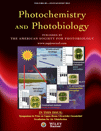 Štengl, V., J. Henych, P. Vomáčka and M. Slušná (2013) Doping of TiO2-GO and TiO2-rGO with Noble Metals: Synthesis, Characterization and Photocatalytic Performance for Azo Dye Discoloration, Photochemistry and Photobiology, DOI: 10.1111/php.12139
Štengl, V., J. Henych, P. Vomáčka and M. Slušná (2013) Doping of TiO2-GO and TiO2-rGO with Noble Metals: Synthesis, Characterization and Photocatalytic Performance for Azo Dye Discoloration, Photochemistry and Photobiology, DOI: 10.1111/php.12139
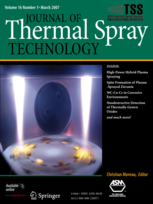
P. Ctibor, I. Pis, J. Kotlan, Z. Pala, I. Khalakhan, V. Stengl, P. Homola, Microstructure and Properties of Plasma-Sprayed Mixture of Cr2O3 and TiO2, J Therm Spray Tech, (2013) 1-7.
Abstract: Rutile TiO2 and Eskolaite Cr2O3 powders were mechanically mixed and fed into the plasma jet simultaneously. The influence of the ratio of components on behavior of the plasma-sprayed coatings was observed using two different compositions, both at two different feeding distances. The produced coatings were analyzed by XRD, SEM, XPS, and light microscopy. Electrical resistivity was measured at voltages from 1 to 100 V. Photocatalytic decomposition of butane on the coatings was studied using visible light together with a setup typically used for UV-light tests. For the coatings with high TiO2 content, besides rutile, low anatase content was identified. The coatings with predominant Cr2O3 exhibited lower porosity and higher hardness. All coatings are relatively efficient photocatalysts for butane decomposition. Moreover, they have good mechanical properties governed predominantly by Cr2O3 content as the harder component. It was proven that the spray process led to obtaining of robust photocatalytically active coatings.
 J.Henych, V.Stengl, Feasible synthesis of TiO2 deposited on kaolin for photocatalytic applications, Clays and Clay minerals, DOI:10.1346/CCMN.2013.0610301
J.Henych, V.Stengl, Feasible synthesis of TiO2 deposited on kaolin for photocatalytic applications, Clays and Clay minerals, DOI:10.1346/CCMN.2013.0610301
Abstract: The aim of the present study was to synthesize a photocatalyst on the basis of TiO2 with kaolin as the support material. Properties such as layered structure and a suitable particle size of kaolin could be beneficial in the production of a high-quality and relatively cheap photocatalyst on an industrial scale. Homogeneous hydrolysis with urea as a precipitation agent and kaolin as support material was used to obtain a kaolin surface covered with TiO2. Samples were characterized by means of X-ray powder diffraction (XRPD), infrared (IR) and Raman spectroscopy, high-resolution transmission electron microscopy (HRTEM), Brunauer-Emmett-Teller (BET) surface area, and Barrett-Joyner-Halenda porosity (BJH) determination. Photocatalytic activity was assessed by a Reactive Black 5 azo dye discoloration in a water suspension and by acetone decomposition on a thin layer of sample in a gas phase. The characterization confirmed that the well crystallized TiO2 was distributed effectively over the whole surface of a kaolin substrate, and photocatalytic tests revealed that the active surface layer of titania particles on kaolin performed well, suggesting that kaolin acts as a suitable support.

Stengl V., Henych J., Strongly luminescent monolayered MoS2 prepared by effective ultrasound exfoliation, Nanoscale, DOI: 10.1039/C3NR00192J
Abstract: An intensive ultrasound in a pressurized batch reactor was used for praparation of monolayered MoS2 nanosheets from natural mineral molybdenite. Exfoliation of bulk MoS2 using ultrasound is an attractive route to large-scale preparation of monolayered crystals. To evaluate quality of delamination methods like X-ray diffraction, Raman spectroscopy and microscopic techniques (TEM and AFM) were employed. From single- or few-layered product obtained from intensive sonication MoS2 quantum dots (MoSQDs) were prepared by an one-pot reaction by refluxing exfoliated nanosheets of MoS2 in ethylene glycol under atmospheric pressure. The synthesised MoSQDs were characterised by photoluminescence spectroscopy and laser-scattering particle size analysis. Our easy preparation leads to very strongly green luminescing quantum dots.
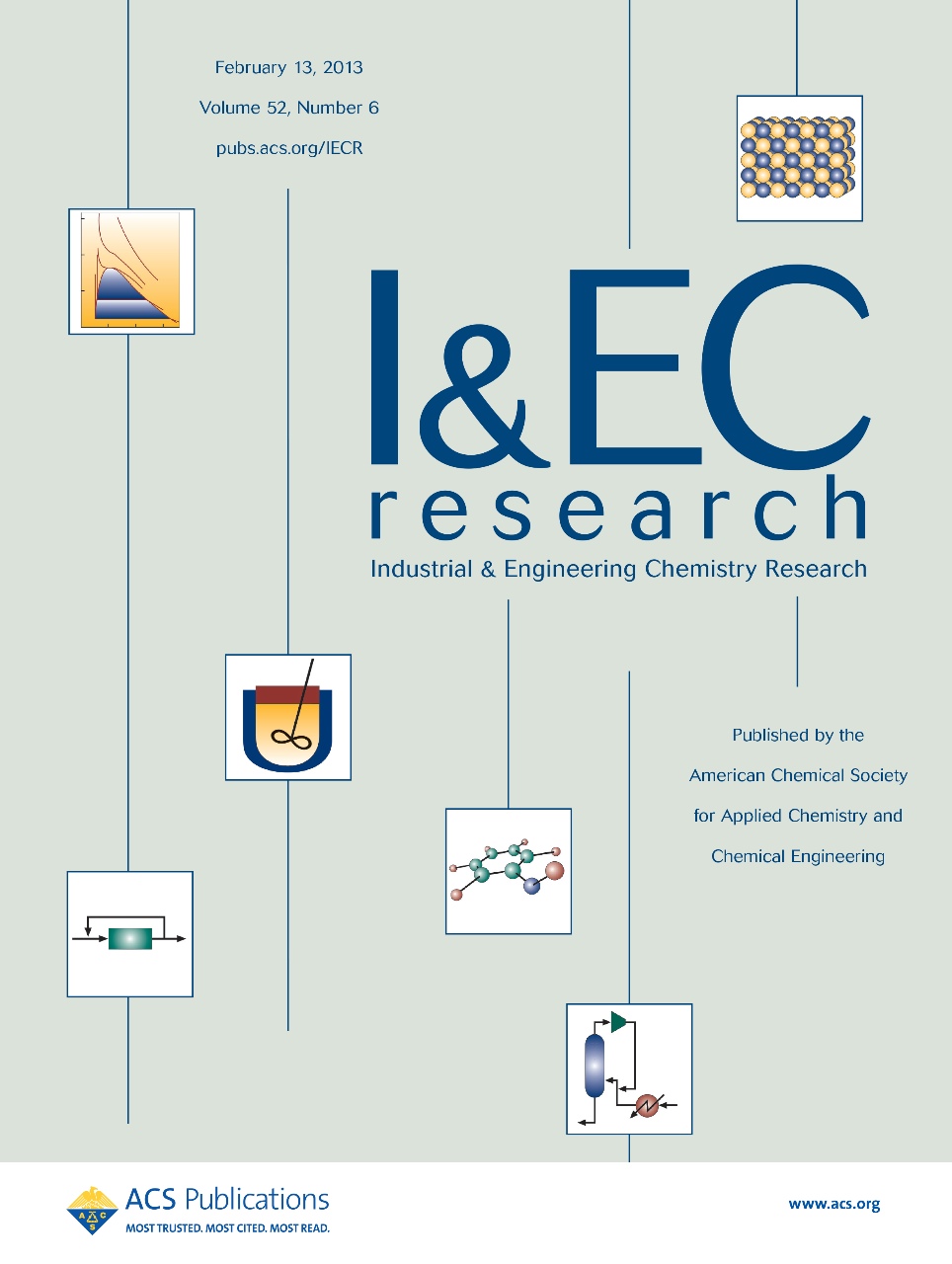 Stengl V., Matys Grygar T., Oplustil F., Olsanska M., Decontamination of sulfur mustard from printed circuit board using Zr-doped titania suspension, Industrial & Engineering Chemistry Research, DOI: 10.1021/ie302711u
Stengl V., Matys Grygar T., Oplustil F., Olsanska M., Decontamination of sulfur mustard from printed circuit board using Zr-doped titania suspension, Industrial & Engineering Chemistry Research, DOI: 10.1021/ie302711u
Abstract: We present a procedure for removal and detoxification of Chemical Warfare Agents (CWA) from corrosion-sensitive components using their reactive sorption (adsorption and bond cleavage). The procedure consists of spraying suspended sorbent over a contaminated surface followed by mechanical removal of the spent sorbent after liquid phase evaporation. The procedure was tested using Video Graphics Array (VGA computer card) VGA card, sulfur mustard (yperite, HD agent, bis(2-chloroethyl)sulfide) and Zr4+-doped TiO2 sorbent obtained by homogeneous hydrolysis. After 60 min interaction of a suspension of the reactive sorbent with the contaminated VGA card, 99.3 % sulfur mustard was removed while the VGA card retained its functionality. The procedure does not require specialized instrumentation. It is feasible for electronic devices, as it does not need corrosive and electrically conducting agents nor non-volatile solvents, which would harm electronic circuits. The method would be applicable to decontamination of broad range of CWAs and pesticides.

Stengl V., Bakardjieva S., Matys Grygar T., Bludska J., Kormunda M., TiO2-Graphene Oxide Nanocomposite as Advanced Photocatalytic Materials, Chemistry Central Journal, 2013, 7:41 doi:10.1186/1752-153X-7-41
Abstract: TiO2-Graphene Oxide (TiO2 - GO) nanocomposite was prepared by thermal hydrolysis of suspension withgraphene oxide (GO) nanosheets and titania peroxo-complex. The characterization of graphene oxide nanosheets was provided by using an atomic force microscope and Raman spectroscopy. The prepared nanocomposites samples were characterized by Brunauer–Emmett–Teller surface area and Barrett–Joiner–Halenda porosity, X-ray Diffraction, Infrared Spectroscopy, Raman Spectroscopy and Transmission Electron Microscopy. UV/VIS diffuse reflectance spectroscopy was employed to estimate band-gap energies. From the TiO2 - GO samples, a 300 μm thin layer on a piece of glass 10x15 cm was created. The photocatalytic activity of the prepared layers was assessed from the kinetics of the photocatalytic degradation of butane in the gas phase. The best photocatalytic activity under UV was observed for sample denoted TiGO_100 (k = 0.03012 h-1), while sample labeled TiGO_075 (k = 0.00774 h-1) demonstrated the best activity under visible light.
 Mattson A, Lejon, C., Bakardjieva, S.,Štengl, V., Österlund, L., Characterisation, phase stability and surface chemical properties of photocatalytic active Zr and Y co-doped anatase TiO2 nanoparticles, Journal of Solid State Chemistry 2013, 199 , pp. 212-223
Mattson A, Lejon, C., Bakardjieva, S.,Štengl, V., Österlund, L., Characterisation, phase stability and surface chemical properties of photocatalytic active Zr and Y co-doped anatase TiO2 nanoparticles, Journal of Solid State Chemistry 2013, 199 , pp. 212-223
Abstract: We report on the characterization, phase stability, surface chemical and photocatalytic properties of Zr and Y co-doped anatase TiO2 nanoparticles prepared by homogenous hydrolysis methods using urea as precipitating agent. The materials were analyzed by scanning electron microscopy, X-ray diffraction, Raman spectroscopy, BET isotherm and BJH pore size distribution measurements. It is shown that Y and Zr ions replace Ti ions in the anatase TiO2 structures up to a critical total dopant concentration of approximately 13 wt%. The co-doped particles show increased phase stability compared to pure anatase TiO2nanoparticles. The anatase to rutile phase transformation is shown to be preceded by cation segregation and dissolution with concomitant precipitation of Y2Ti2−xZrxO7 and ZrTiO4. Co-doping modifies the optical absorption edge with a resulting attenuation of the Urbach tail. The band gap is slightly blue-shifted at high doping concentrations, and red shifted at lower doping concentrations. Formic acid adsorption was used as a probe molecule to investigate surface chemical properties and adsorbate structures. It was found that the relative abundance of monodentate formate compared to bidentate coordinated formate decreases with increasing doping concentration. This is attributed to an increased surface acidity with increasing dopant concentration. Photodegradation of formic acid occurred on all samples. With mode-resolved in situ FTIR spectroscopy it is shown that the rate of photodegradation of monodentate formate species are higher than for bidentate formate species. Thus our results show that the trend of decreasing photo-degradation rate with increasing dopant concentration can be explained by the adsorbate structure, which is controlled by the acidity of the surface.
Kontakt
Ústav anorganické chemie AV ČR v.v.i.
250 68 Husinec-Řež
266 172 202
stengl@iic.cas.cz; stengl@me.com